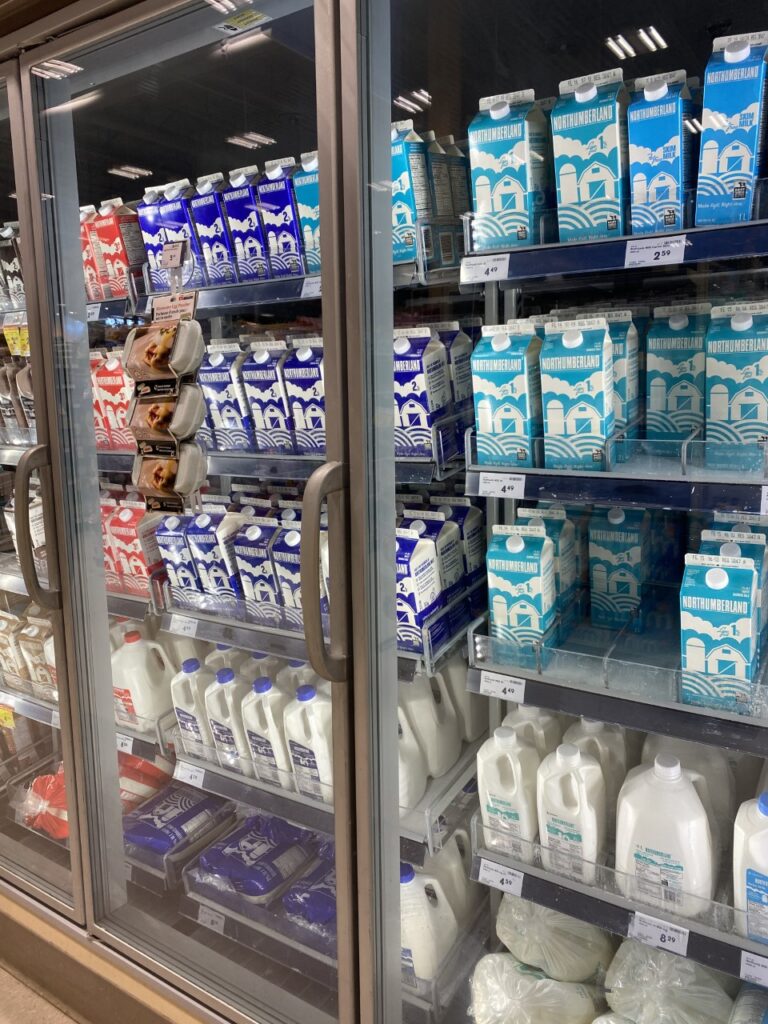Even milk and eggs, the nutritional staple of low-income households for hundreds of years, have not managed to escape the drastic inflation crisis sweeping the country.
With the prices of essentials continuously on the rise, students are forced to scrape the bottom of the barrel. Even for the most frugal of individuals, basics such as milk and eggs are becoming more challenging to work into tight budgets. It goes without saying that students with dependents or those with extra expenses and limited work opportunities due to disability face even further financial strain.
It is not uncommon to find the average student sacrificing nutrition to remain within their monthly budget. Bowls of cereal at suppertime, coffee for breakfast, and granola bars at lunch may seem unfathomable to some but are sadly the reality of many student households.
In Fredericton, the cost of a carton of regular eggs ranges from $2.75 to $4.99, with the cost of 1 litre of white milk resting between $2.50 and $3.80. A loaf of fresh white bread, around 500g, is now reaching $9, with white rice priced as high as $10.99.
The recommended minimum amount to spend monthly on food to intake the suggested amount of necessary nutrients is $506.40, according to Numbeo. This number is based on North American food prices, such as milk and eggs, beef and chicken, and tomato and lettuce.
“I probably spend around $120 a month because I don’t buy meat,” says Sarah, a second-year UNB Arts student who is living on her own for the first time this year. “My parents will send me meat to put in the freezer, so I can save a lot of money that way.” Meat and protein are difficult to factor into a student budget, given 1kg of chicken fillets are climbing to $22 and 1kg of beef to $26.
Sarah doesn’t eat breakfast, and can rarely justify buying vegetables because of their price.
“One head of lettuce is $5.99, and I can’t eat it all before it goes bad in three days.” Sarah will invest in buying baby carrots and sometimes cucumber, as far as vegetables go.
Being a student with dietary restrictions poses even heavier stress on the allocated monthly food budget considering the price difference in gluten-free, lactose-free and plant-based products.
Allie, due to her lactose intolerance, cannot ingest dairy products and chooses not to eat meat.
“Almost all of the products I buy are plant-based or dairy-free, or sometimes both.” She tends to buy only these products, opting out of essentials like bread and rice. “Now I probably spend $175 or $200 per month.”
With regular white bread priced as high as nine dollars, gluten-free bread is consistently priced at ten dollars to twelve dollars. Two litres of lactose-free milk is between six and eight dollars, about two dollars more than regular dairy milk.
Those with celiac disease and lactose intolerance are forced to spend more money on these essentials despite having a health condition which is out of their control.
Additionally, with pressing issues like climate change, as well as the accommodation of spiritual or religious beliefs, young people are leaning more heavily toward more expensive vegan products for ethical and personal reasons.




